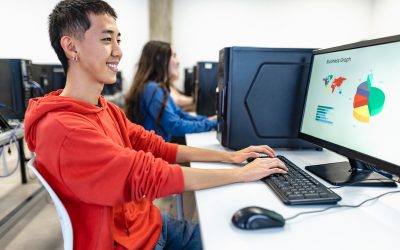By: Gabby Jacob-Sandejas
In March 2020, schools and students alike had to face one of the biggest challenges with the emergence of the pandemic; the shift to online learning. In such a short span of time, everyone was forced to adjust to the new-set up. From zoom lectures to digital submissions, it is sufficient to say that the coronavirus outbreak helped speed up the inevitable digitalization of the workplace and classroom.
Fast forward to 2022 and schools are beginning to welcome students back to campus. But with over two years online and becoming acquainted with online learning spaces, we now must ask the question: is the classroom truly back to the way it was? Should we expect a reversion to the “traditional” academic set up, or has our time at home altered how classes are handled?
As a student, I believe that with all the difficulties that came with learning from home, there is also no denying how technology and innovation have made certain processes more convenient and efficient. Here are some developments that were incorporated into my academic life over quarantine and are adjustments that I believe are worth keeping:
1. Online submission portals
An efficient way to prevent the loss of documents and cut down paper waste! One aspect of physical set-up that I noticed every time I’d clear out my bag for the semester, was how much paper we use up for our assessments, memos, handouts, and quizzes. The online setup solved this wastage problem while helping me keep everything organized and in one place.
2. Collaborative annotation tools such as Perusall
An alternative to discussion board posts, I find it extremely useful for classes to use Perusall as a means of collating the thoughts of everyone on a reading without having to pluck out and cite lines from the reading on a separate page. It also really helps to have a variety of discussions and insights to look back on when doing papers on the class material.
3. The normalization of assessment trackers and collaborative calendars
Having assessment trackers (usually integrated within the Learning Management System or LMS) or shared class calendar you can integrate with those of other classes, allows you to plan your semester in advance conveniently as well as allows everyone to see and be aware of changes of schedule.
Moreover, with the integration of both blended and hybrid learning practices into our curriculum, asynchronous learning is something that I think will continue in the near future. This is where the LMS available to you really matters, and can provide both students and teachers with various functions that have become staples in guided self-learning and something that will prove to continue being useful in the “new normal” physical classroom. Pre-work done through the online LMS, through teachers uploading recordings, powerpoints, readings, and other related materials, will also be encouraged and something we can expect in the coming semesters.
The promotion of asynchronous learning doesn’t necessarily mean the students will be left to fend for themselves, as the familiarity of teachers with digital communication platforms also enables direct and more frequent communication with their students, making them more accessible outside of class time as well without the hassle of onsite consultations.
Ultimately, I do think that the face-to-face and social aspect of onsite classes is something that is important for the motivation (and sanity) of us students, but I also do think the reversion to onsite school does not mean resetting to the way things were before. The progress that education technology has made through the pandemic as its catalyst is something that should not be ignored moving forward, but rather embraced and adapted into this new normal. And with these new tools and practices, I’m excited to see technology and innovation playing a bigger role within the physical classroom.











